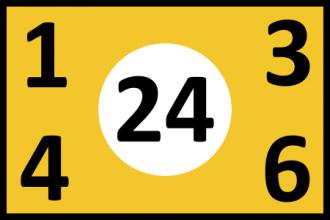Calculate the number 24
Calculate the number 24 using numbers [1, 3, 4, 6] and basic arithmetic operations (+, -, *, /). Each of the numbers must be used only once.Correct answers: 70
The first user who solved this task is Sanja Šabović.
#brainteasers #math


